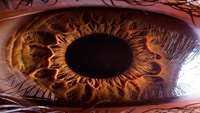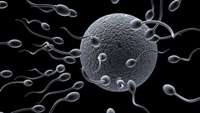Treating Blindness By Activating Dormant Retinal Stem Cells
The first FDA approved therapy to directly deliver normal genes to take place of nonfunctional version to restore vision via activating dormant retina stem cells in a history making process by Spark Therapeutic Luxturna scientists has been demonstrated, as published in Nature.
Stem Cell-derived Blastocysts Push Early Embryo Research Forward
Current research into the early mammalian embryo, or blastocyst, suffers from the lack of a model system that allows the precise analysis of the developmental processes involved and the interactions between embryonic and extra-embryonic tissues. However, a Nature study led by Nicolas C. Rivron (Maastricht University,
New Study Suggests Placental Stem Cell Therapy for Inherited Skin Blistering Disease
Mutations in the COL7A1 gene, which encodes type VII collagen (C7), lead to the disruption of the dermal-epidermal junction (DEJ) and the development of the inherited skin blistering disease severe recessive dystrophic epidermolysis bullosa (RDEB) (2).
New 3D-printed device could help treat spinal cord injuries
Engineers and medical researchers at the University of Minnesota have teamed up to create a groundbreaking 3-D-printed device that could someday help patients with long-term spinal cord injuries regain some function.
New insights on sperm production lay groundwork for solving male infertility
Nearly one in eight couples in the U.S. face infertility, and about half of those cases can be attributed to semen abnormalities in the male partner.
Modifying the major model of a modern major mouse model
If a new anti-cancer drug shows promise in a Petri dish, often the next step is to test the drugs effect in mice. This system tends to work well with drugs that directly target cancer, but breaks down with immunotherapies.
Traumatic brain injury recovery via petri dish
Researchers in the University of Georgias Regenerative Bioscience Center have succeeded in reproducing the effects of traumatic brain injury and stimulating recovery in neuron cells grown in a petri dish.
Cellular pumps protect the gut from toxins
The master regulators of gut stem cells, called intestinal myofibroblasts, have pumps that protect them, and thus the gut, from the toxic effects of a wide range of compounds, including the anticancer drug tamoxifen, according to an investigation led by Duke-NUS Medical School.
Researchers discover system that could reduce neurodegeneration in Huntingtons disease
Neuroscientist Dr. David Vilchez and his team at CECAD, the University of Colognes Cluster of Excellence for Aging Research, have made an important step toward understanding the mechanisms that cause the neurodegenerative disorder Huntingtons disease
Anticancer drugs delivered by a new drug delivery system reduce tumor size
Cancer tissue cells are divided into two major groups: cancer cells and cancer stem cells (CSCs). CSCs are related to cancer progression and dissemination, so its necessary to eradicate CSCs in order to cure cancer.




_113160.jpg)



_112902.jpg)
_112901.jpg)
_112771.jpg)

